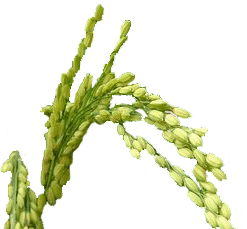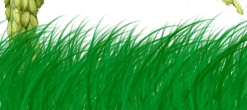
 |
by: CDJ Internet Cafe |
The town of Libon in the province of Albay traces its recorded history to the Second Expedition of Captain Juan de Salcedo to the Bicol Region in 1573. Salcedo first reached the Bicol Region via the northern entrance in 1571, shortly after the capture of Manila by his uncle, Miguel Lopez y Legazpi. The latter had commissioned Salcedo to pacify the surrounding regions, including the native settlements around the Laguna de Bay area, when Salcedo learned from the natives that somewhere beyond the mountains of southern Luzon was a placed called Paracale with its fabulous gold mines. Wasting no time and with a force of forty men and some natives as guide, Salcedo proceeded toward the direction of the said gold mines, traveling along the Pacific Coast until they reached the Northern part of the Bicol Region and entered Paracale. Meanwhile, Legazpi wondering about the whereabouts of his nephew, dispatched a group headed by Sergeant Hurtado to locate the missing expedition. Hurtado found Salcedo in Paracale on December 28, 1571. Acting on order of Legazpi, Salcedo cut short his Bicol explorations and returned to Manila, out he bowed to return to Bicol as soon as possible. In early 1573, Salcedo undertook his second trip to the Bicol Region retracing his first route and with the wealth of information that he gathered during his first arrival in the region, he led his men beyond Paracale. Sailing the Bicol River upstream, Salcedo and his men finally reached its source, Bato Lake. Then on the banks of this lake, "on suitable terrain", according to a Bicolano historian, Salcedo set up the foundations of a "Settlement for Spaniards and christened it Santiago de Libong." A report on Salcedo's second expedition to Bicol was sent to the King of Spain by Guido de Lavesarez, then Governor General of the Islands: Existing record on Salcedo's second trip to the Bicol Region point out that he left behind in the villa he founded , Santiago de Libong, as chief law officer, Captain Pedro de Chavez, and some eighty soldiers. It seems a little strange that no mention of the founding of Santiago de Libong was made by Governor Lavesarez in his report to the King of Spain. Fr. Sanchez, in an attempt to explain his puzzling omission wrote; Captain Chavez was, however, sent back to the Bicol Region in 1579 and in honor of Don Francisco de Sande, second proprietary governor of Manila, founded a city in Camarines and named it Nueva Caceres, in memory of Don Francisco de Sande's home city in Spain, Nueva Caceres in Camarines is now Naga City. |
 |
HOW LIBON GOT ITS NAME The town of Libon, as it is presently known was originally called LIBONG. It is not known when and how the letter "g" got dropped. Some writers believe that the Spaniards must have found it difficult to pronounce the word "Libong" with the letter g, so that in due time Libong became Libon. There are conflicting and various versions regarding the origin of the name LIBONG. Some say that the word must have been derived from the Bicol term "libong" or "ribong", meaning puzzled, dizziness, losing one's sense of direction, or becoming oriented. Others believe that the word Libon must have originated from a Spanish term "libon", which means "assault". Another version is that the word is a corruption of the Bicol word "libtong", meaning difficulty, obatacle or pool of stagnant water, which when applied to a place could mean a difficult or stagnant place. The more popular and perhaps more plausible version is the claim that Libon originated from the Bicol term "libong" or "ribong", and there is a story which seems to support this view. The story goes that Captain Juan de Salcedo and his men arrived in this place, by sailing across Lake Bato and entering the river called, Quimba. Sailing upstream, they finally landed in a place called Linao; (Linao is one of the barrios of Libon today and is situated on the banks of Quimba River). Here Salcedo and his men proceeded to find a town. However, after exploring the surrounding area and noting that Linao was at the foot of a mountain range, making it vulnerable to enemy attacks from the surrounding mountains, Salcedo and his men, with some natives as their guide, decided to move on to a more suitable place. Traveling across marshy land, they arrived at a slightly elevated area. Upon looking around and trying to determine where they were, one native guide remarked "libong aco". (I am confused). The Spaniards on hearing the word "libong" understood it to mean the name of the place. Hence, Salcedo christened it "Santiago de Libon." |
ECONOMY Libon is a 2nd Class Municipality (2007 census) and is also known as "The Rice Granary of Albay". Agriculture is the bloodstream of its economy. |
MAP OF LIBON
|
 |
|
 |
 |